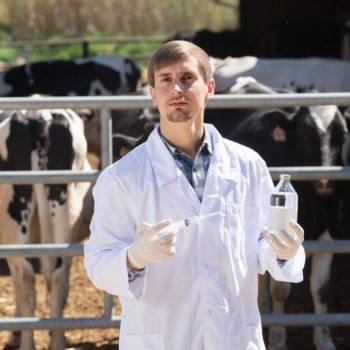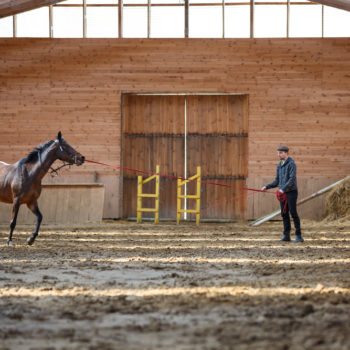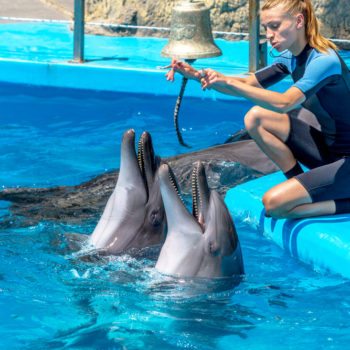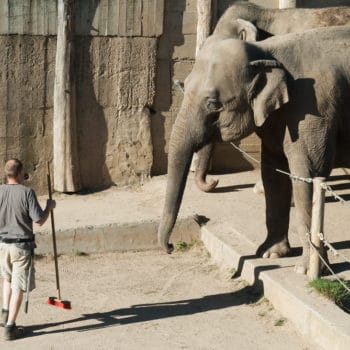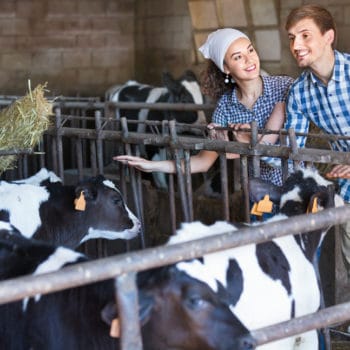Why We Love It
-
$30,370Potential Avg. Salary
-
-0.7%Job Growth Rate
-
InvestigativeCareer Attribute
-
Outdoor Work EnvironmentCareer Attribute
The role of an animal trapper and hunter is to provide efficient wildlife management and prevention services to keep both commercial and residential properties secure. In this capacity, you would humanely take care of any nuisance animal problems.
Recommended Schools
What is an Animal Trapper & Hunter?
Duties
Here is a look at the duties to be followed by an animal trapper and hunter:
- Carefully follow as well as enforce the applicable hunting or trapping laws and regulations in the area.
- Ensure the safety of surrounding wildlife and people by capturing, rescuing or removing an animal that is posing a threat to their well-being.
- Learn and use a wide range of traps and make maintenance checks for all traps/bait stations, such that they are in keeping with hunting code standards.
- Decide on where to place traps or poisons, based on aerial and grip maps for hunting regions.
- Keep a record of work requests and completed wildlife jobs using spreadsheets or other software.
Day In The Life
In this profession, you have the opportunity to travel where the job takes you. Depending on the type of contract hire, you might travel to other countries in the world to track down wildlife. The important part is that you have to be well-versed in the hunting laws and regulations no matter where the location. Animals that are nationally protected or endangered cannot be killed or trapped. A clear understanding of respecting and treating animals with care is a vital part of the job.
If you have a smaller independent business, much of the time is spent going around neighbourhoods in a region and completing both commercial and residential wildlife removal. This means you can be called upon to handle a bat infestation in a mall or a snake stuck in the drainage pipes of a private property. You might rescue and release trapped animals, climb up to higher floors or rooftops to remove animals and perform repairs. Administrative work can involve scheduling meetings with customers, taking calls to discuss wildlife services on offer, handling business finances, etc.
Work Schedule
An animal hunter or trapper frequently works irregular hours and in all kinds of weather conditions. Animal control issues may crop up seven days a week in various terrain such as farmlands, hills, animal reserves and urban areas. You need to be prepared to reach the location whether it is by helicopter, truck, or by foot. Much of the work will be done outdoors and by working alone. The rare time you might take time off as an animal hunter or trapper, you will have to ensure that the traps you have set up around an area are removed and the business is on hold.
Growth Of The Job
The field of animal control and nuisance wildlife removal is rapidly growing. Growth of your profession as animal trapper and hunter is mostly dependent on the expansion of your business and reputation as a licensed expert on wildlife. According to US Bureau of Labour Statistics (BLS), animal control professionals will see an estimated 8% increase between 2012-2022. You will also find opportunities working with social advocacy groups.
Typical Employers
Many animal trappers and hunters have an independent business, through which they respond to requests for help from individuals. They are also hired on a contract or full-time basis by city and county agencies in order to take care of animal control problems.
Recommended Schools
How To Become an Animal Trapper & Hunter
Animal trappers and hunters have varied qualifications but all have sufficient experience on the job in common. To gain an entry-level position in the field, you should at least possess a high school diploma. You can start off by working at jobs that provide similar exposure to see if you are a good fit, e.g. with livestock or farming, servicing hunting equipment, and veterinary services. You should have superior levels of fitness to withstand the long work hours and the demanding physical activity, such as navigating rough terrain, climbing to the top of buildings, etc.
If you intend to work for specialized agencies, you may also have to finish additional training or even get an undergraduate degree in animal nutrition, animal care, and animal behavior. You should have a driver’s license and do some research on which state, county, and city occupational licenses apply to you. Animal control companies or government agencies will provide basic on-the-job training in foundation knowledge like public relations, first aid, animal capture strategies, community monitoring, animal control and wildlife treatments.
Animal Trapper & Hunter Salary Data
We’ve provided you the following to learn more about this career. The salary and growth data on this page comes from recently published Bureau of Labor Statistics data while the recommendations and editorial content are based on our research.
National Anual Salary
Low Range
$21,920Average
$30,370High Range
$46,050National Hourly Wage
Low Range
$11/hrAverage
$15/hrHigh Range
$22/hrHow do Animal Trapper & Hunter salaries stack up to other jobs across the country? Based on the latest jobs data nationwide, Animal Trapper & Hunter's can make an average annual salary of $30,370, or $15 per hour. This makes it an Above Average Salary. On the lower end, they can make $21,920 or $11 per hour, perhaps when just starting out or based on the state you live in.
Salary Rankings And Facts
#694 Nationally for All Careers
Highest Education Among Animal Trapper & Hunters
- 0% Doctorate
- 0% Masters
- 0% Bachelors
- 0% Associates
- 0% College
- 0% High School
- 0% Less than High School
Job Growth Projections and Forecast
2014 Total Jobs
28,4002024 Est. Jobs
28,200Job Growth Rate
-0.7%Est. New Jobs
-200How does Animal Trapper & Hunter job growth stack up to other jobs across the country? By 2024, there will be a change of -200 jobs for a total of 28,200 people employed in the career nationwide. This is a -0.7% change in growth over the next ten years, giving the career a growth rate nationwide of Below Average.
Growth Rankings And Facts
#631 Nationally for All Careers
What Companies Employ The Most Animal Trapper & Hunters
| Industry | Current Jobs | New Jobs Needed | % Increase |
|---|---|---|---|
| Self-employed workers | 16,400 | 1,000 | 1% |
| Fishing, hunting, and trapping | 11,400 | -1,200 | -1% |
| Seafood product preparation and packaging | 100 | --- | --- |



